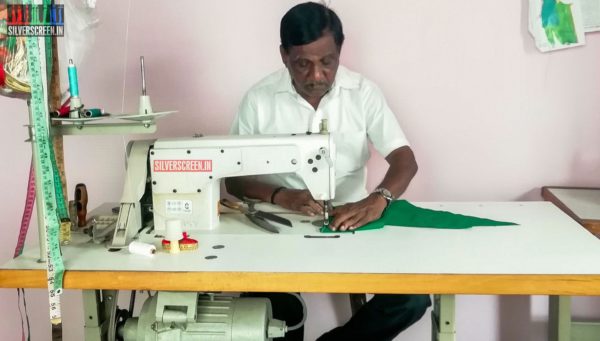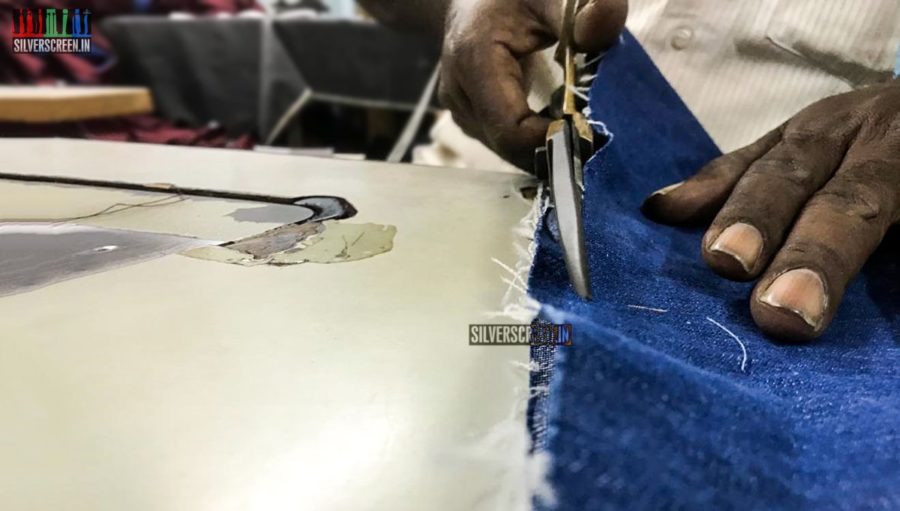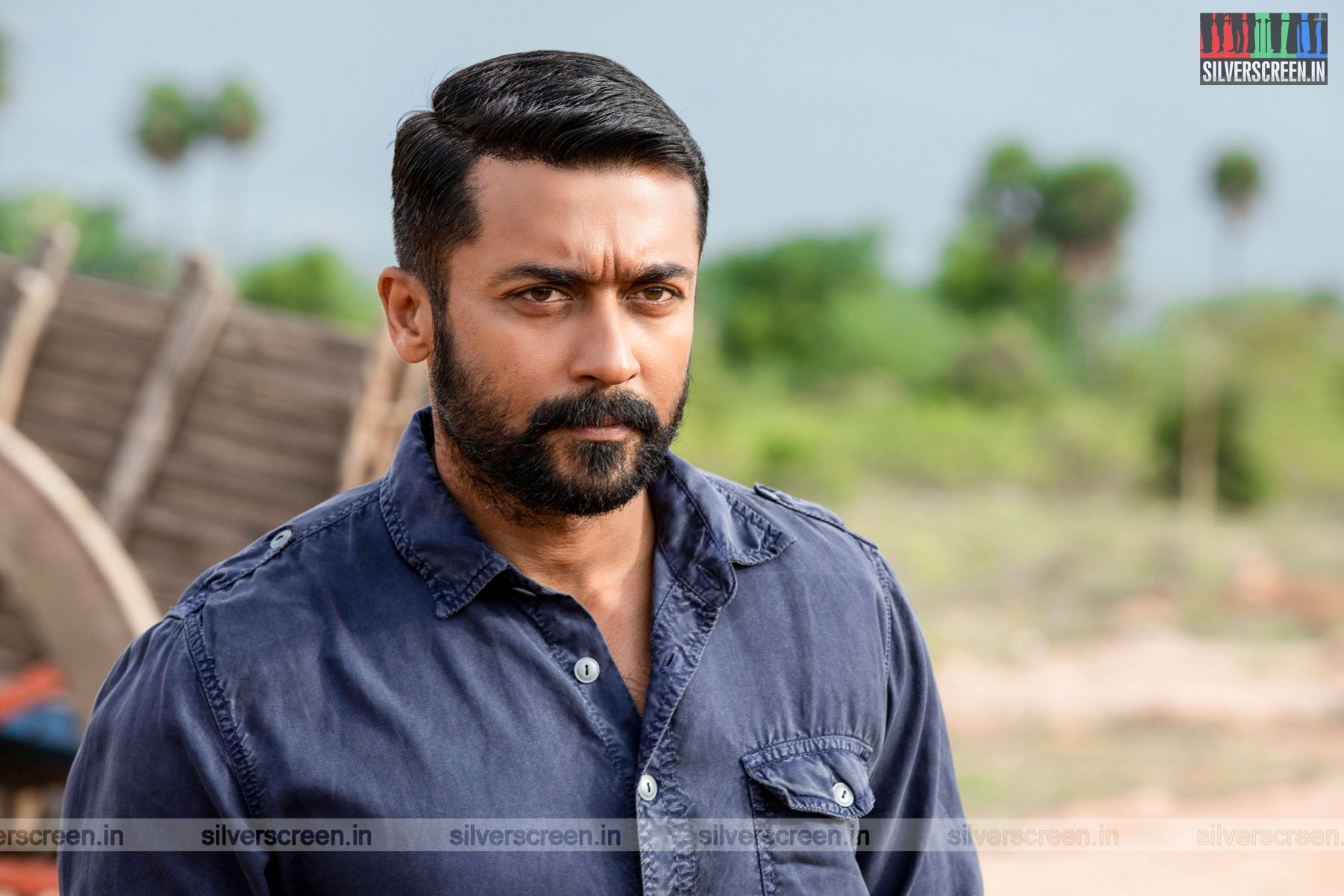Right before the lockdown due to Covid-19 began on March 23, K Raghunatha Rao was working as a costumer on seven projects under various chief designers. As a freelance costumer, he stitches clothes for advertisement shoots, films and television serials.
He received roughly Rs 4,000 for each of these projects and remained on these sets for around two or three days.
Until seven months ago, he pieced together dreamy looks for heroes and heroines, added flashy sequins to the costumes of background dancers and fixed elaborate floral brooches on lengthy gowns for advertisement shoots.
“Any changes, alterations and fittings were usually done on the spot. I was available day and night at the studio along with one or two other costumers in each set. On other days, I worked out of a small rented room in Vadapalani in Chennai, working on large gowns and dresses of actresses,” he said.
His work was going quite well. “I was earning Rs 30,000 per month with enough to pay my children’s school fees and rent. Everything came crashing down in March,” he says.
Seven months after the lockdown, Rao says that he has gotten the opportunity to work on only two projects despite relaxations by the state and Central governments to resume shooting.
“I have accrued debts amounting to Rs 1.2 lakh. It is likely that I will borrow more in the coming months. My story is not unique. There are a hundred others in the same street as me who are dealing with the same problem,” he says.
Stitching the dream
In Tamil Nadu, there are around 900 members affiliated to the South India Cine and TV Costumes Union, says president of the union, V Moorthy.
While most members are from different parts of Tamil Nadu, a small section hail from other southern states including Andhra Pradesh, Kerala and Karnataka, he says. He adds that there are several other costumers who are yet to be affiliated to the union.
“If we count them, the numbers are likely to rise to 1,500 to 2,000. Everyone lives in and around AVM Studios in Vadapalani, Kodambakkam and T Nagar. It is unlikely to see costumers beyond these areas,” he says.
Stitching a new costume at his shop in Vadapalani, he explains that the world of costumes in the Tamil film industry has hierarchies.
Till about 15 years ago, the industry was divided into chiefs who created designs and costumers who stitched the clothes. The chiefs would work with directors based on their personal rapport to devise looks for various scenes. They would then instruct their costumers to stitch the desired number of dresses, says Moorthy, a chief.
“In the recent past, however, designers have taken over our roles. We stick to their instructions and have little creative freedom. The costumers do not have the space to grow and their talent is not recognised,” says DK Moorthy, secretary of the Union.
Unlike designers, chiefs and costumers are not armed with professional degrees or high profile portfolios, which they feel holds them back in their rise up the ladder.
Around 150 designers, 300 chiefs and 450 costumers now constitute the Union, he says. Many costumers who are in the lowest rung, have returned to their villages, hoping to curtail their expenses, he adds.
“Everyone is managing by working in tailoring units or trying to find work in garment factories. Most of them are waiting to get back to cinema as the money is much better than the factories,” says DK Moorthy.

Anand, who works as a costumer but unaffiliated to the union, says that many of his colleagues from Andhra Pradesh have returned home due to their inability to pay piling debts. “When they go back home, the rent amount is saved. This is a big relief to most.”
It is difficult for him to predict when they will get back to normal times, when work will be bustling, says Anand. “Earlier I used to travel for projects in the Malayalam and Telugu film industries to ensure that I could boost my income. It is unlikely that those industries would now want people from other states to be part of their crew,” he says.
Revival
Highlighting the crucial role of costumers, actor Simran says that when one dreams of making a film, a dedicated mind must continuously work on envisioning the look and the theme. “The colour scheme, mood of the character- all of it is factored into the world of costume making. It is just as important as the script and cannot be ignored,” she says.

Regarded as one of the best dancers in the industry, Simran has spent a significant amount of time with designers to work through costume changes. “Skilled costumers in our industry have been able to make elaborate and beautiful clothes using inexpensive material,” she says.
Fashion stylist and designer Prajanya Anand, who has worked on a number of projects with artists from the Tamil film industry, says that the industry is finally on the cusp of revival. She reiterates the need for cooperative costumers to ensure that the look for the film is executed well.
With various films resuming production, costumers who share a long association with some production houses are finally getting jobs, she says. “It is only the unaffiliated members who are affected,” she says.
DK Moorthy adds that union members are now working on around 15 to 20 films and about 40 television serials. Stating that the number of projects was triple of what it is today, he says: “We are glad that we are finally able to begin at least some work.”
Recommended
“In six months time, we will be able to ensure as many jobs as before,” says M Sargunan, a chief costumer who has been working in the industry for over 20 years.
Costumers Rao and Anand say that a quick turn around in six months is wishful thinking for them. “Although it would be great to be flooded with projects, we are skeptical of whether things will return to normalcy within half a year. Talk in the industry is that there may no longer be as many songs as before in a film. These decisions are costly for us. We would like to remain optimistic but we have no choice now except to wait,” says Rao.
Photos by Dani Charles



